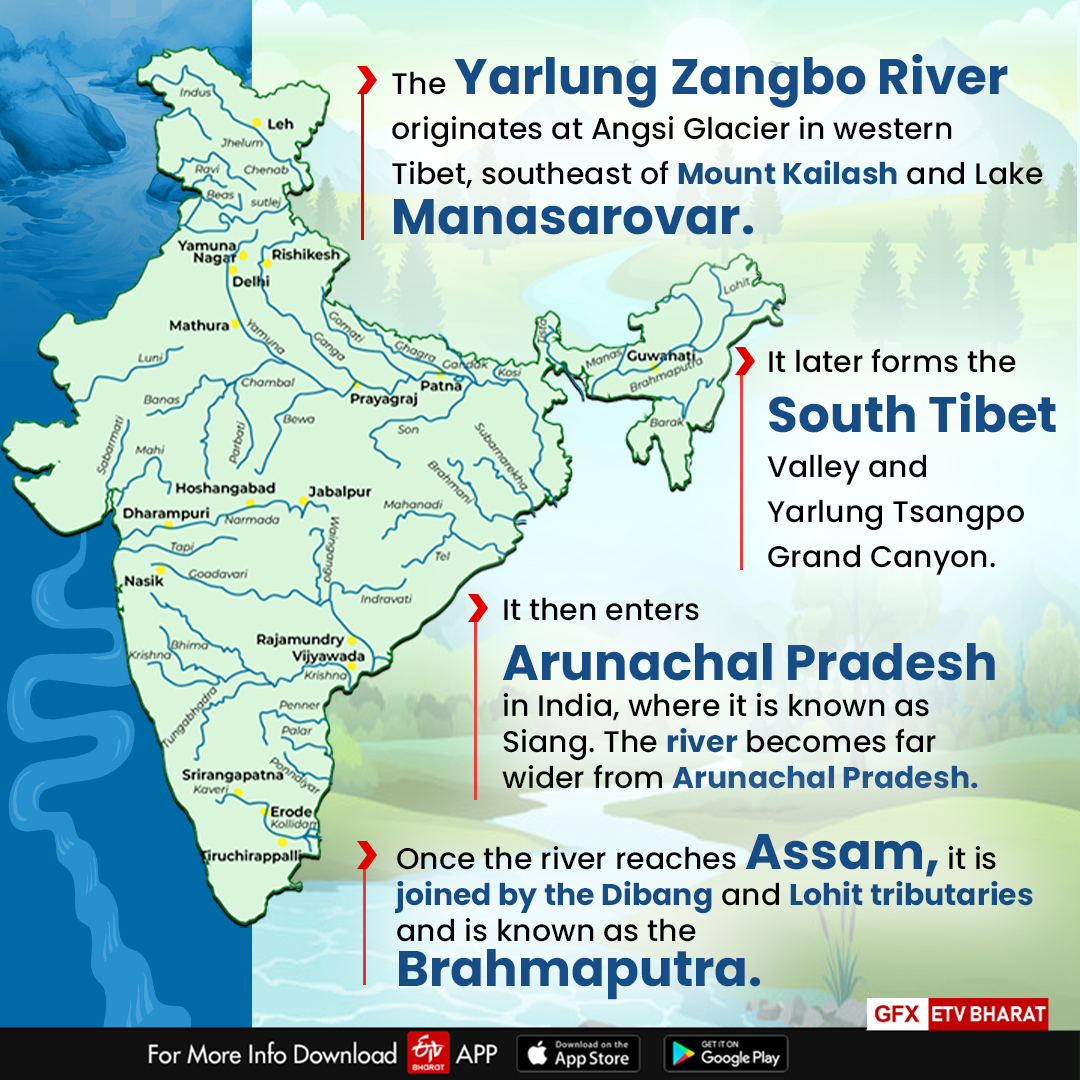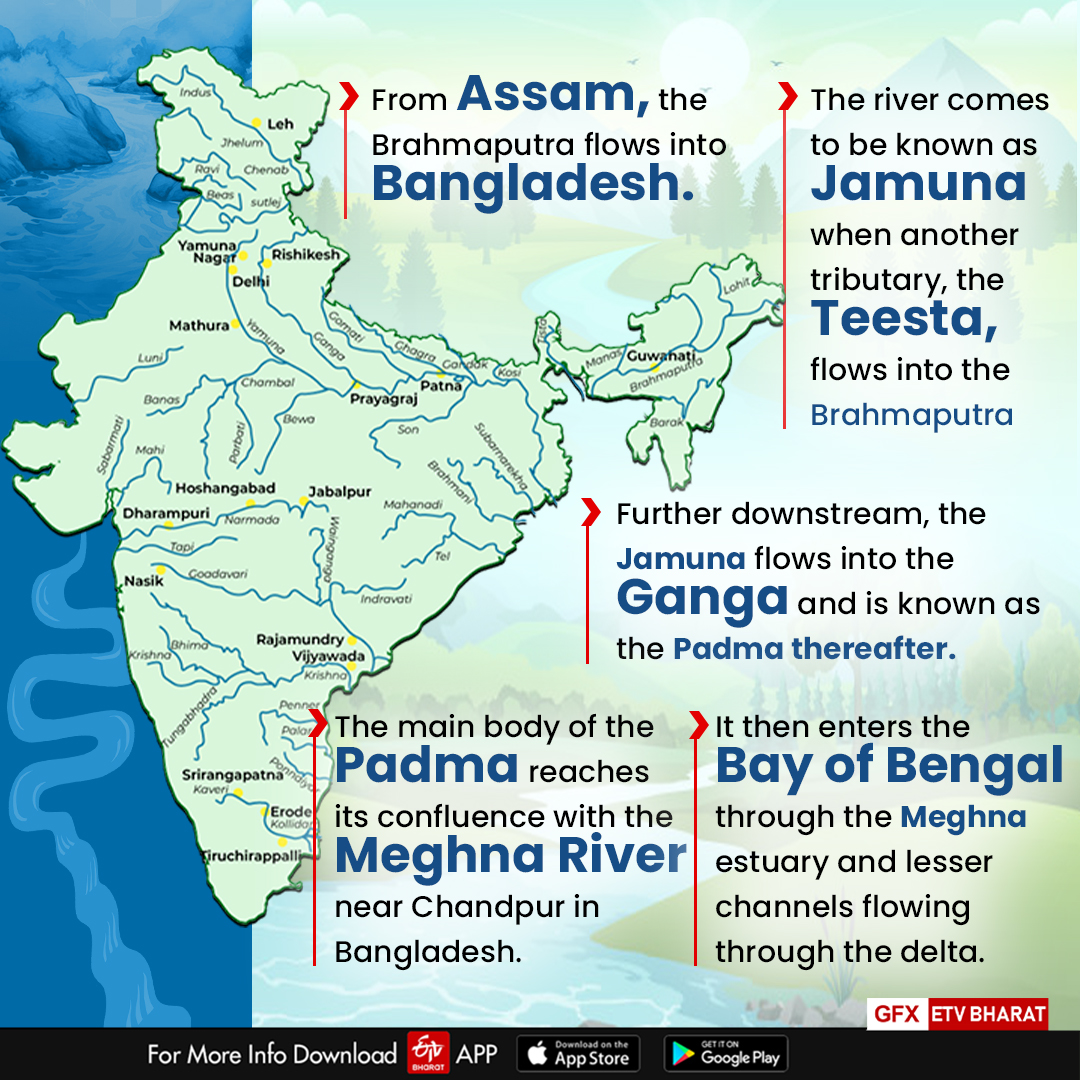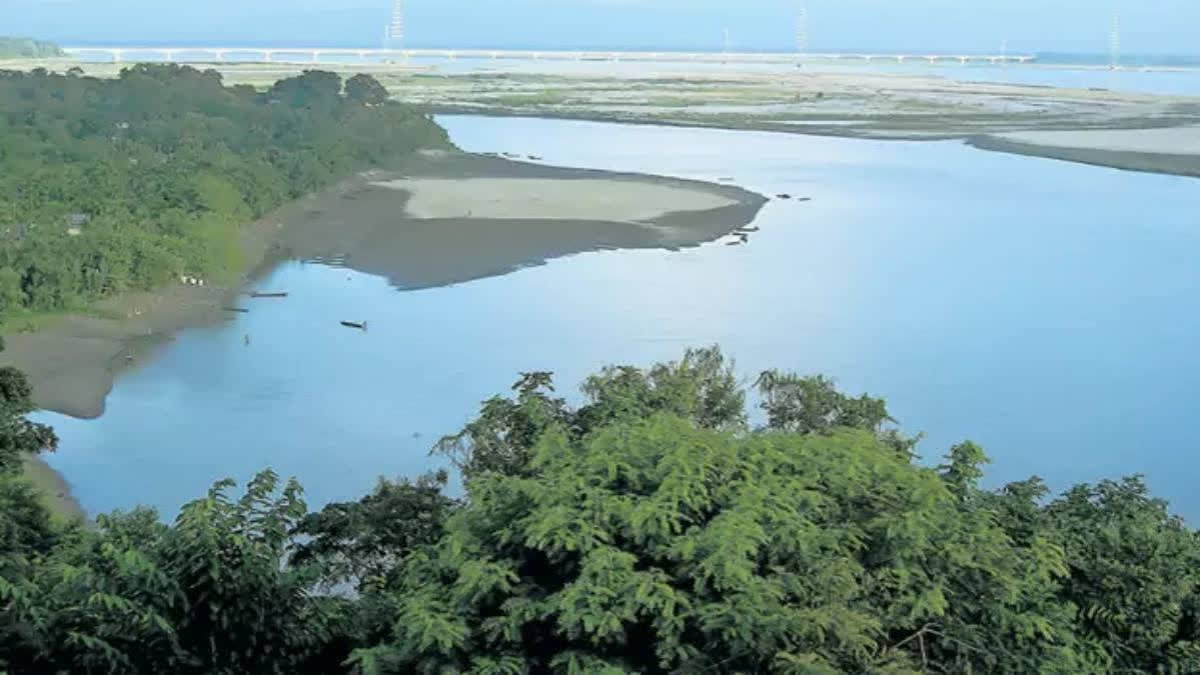New Delhi: With India taking up the issue of construction of a mega dam on the Yarlung Zangbo River in Tibet, known as the Brahmaputra in India, with China, the possible implications of a massive hydropower project on what is the world's highest major river have come into focus.
"As a lower riparian state with established user rights to the waters of the river, we have consistently expressed, through expert level as well as diplomatic channels, our views and concerns to the Chinese side over mega projects on rivers in their territory," External Affairs Ministry spokesperson Randhir Jaiswal said during his regular media briefing here on Friday.
"These have been reiterated along with the need for transparency and consultation with downstream countries following the latest report," Jaiswal stated. "The Chinese side has been urged to ensure that the interests of downstream states of the Brahmaputra are not harmed by activities in upstream areas. We will continue to monitor and take necessary measures to protect our interests."
Last month, the Chinese government approved the construction of the dam on the lower reaches of the Yarlung Zangbo River, state-run Xinhua news agency reported citing an official statement. The dam, to be built at a cost of $137 billion, is expected to be the world's largest hydroelectric project when completed and will produce nearly 300 billion kilowatt-hours (kWh) of electricity annually. That means it will generate three times the power of the Three Gorges Dam on the Yangtze River, also in China, which is currently the world's largest hydroelectric project.
Though the massive project was included in China's 14th five-year plan from 2021 to 2025, it was only on December 25 last year that Beijing approved its construction sparking concerns among experts in India and Bangladesh, countries through which the Brahmaputra flows.
China claims that by building the mega dam on the Yarlung Zangbo River, it will achieve net carbon neutrality by 2060. Chinese foreign ministry spokesperson Mao Ning said that China's hydropower development in the lower reaches of the Yarlung Zangbo River "aims to speed up developing clean energy, and respond to climate change and extreme hydrological disasters".
The river originates at Angsi Glacier in western Tibet, southeast of Mount Kailash and Lake Manasarovar. It later forms the South Tibet Valley and Yarlung Tsangpo Grand Canyon and then enters Arunachal Pradesh in India, where it is known as Siang. The river becomes far wider from Arunachal Pradesh. Once the river reaches Assam, it is joined by the Dibang and Lohit tributaries and is known as the Brahmaputra. From Assam, the Brahmaputra flows into Bangladesh.

The river comes to be known as Jamuna when another tributary, the Teesta, flows into the Brahmaputra. Further downstream, the Jamuna flows into the Ganga and is known as the Padma thereafter. The main body of the Padma reaches its confluence with the Meghna River near Chandpur in Bangladesh. It then enters the Bay of Bengal through the Meghna estuary and lesser channels flowing through the delta.

Now, if China builds the dam on the river known as the Yarlung Zangbo in Tibet, experts fear that it will cause immense hydrological and ecological harm downstream in India and Bangladesh. It will also affect India's prospects of building hydropower projects on the course of the river, particularly in Arunachal Pradesh.
China plans to build the dam at a defining morphological feature called the Great Bend where the river makes a dramatic U-turn, flowing around the Namcha Barwa peak (7,782 metres). It descends rapidly, carving one of the deepest and most spectacular gorges in the world, the Yarlung Zangbo Grand Canyon, with depths exceeding 5,000 metres. The facility is planned to be constructed in Medog County within the Nyingtri Prefecture, situated near Arunachal Pradesh.
"Medog County is known to be seismically active," Uttam Kumar Sinha, Senior Fellow at the Manohar Parrikar Institute of Defence Studies and Analyses and a leading commentator on transboundary water issues, told ETV Bharat. "One can only assume that the Chinese side has done proper studies before going ahead with the construction of the dam. If the dam is damaged, the repercussions will have to be faced by India."
Sinha also highlighted the ecological and environmental damages the dam might cause. "But then, China does not respect nature's sovereignty," he said. "Since these projects fall within its territory, China just goes ahead."
Sinha is of the view that China should be absolutely transparent while going about constructing the dam. It should share all information, including hydrological data, with India. India currently has a memorandum of understanding (MoU) with China under which Beijing shares hydrological data on the Brahmaputra with New Delhi.
"The current MoU should be updated and enhanced," Sinha said. "The new dam should be brought into the MoU."
Read More



